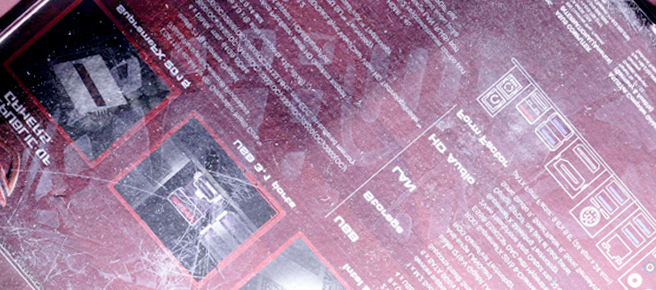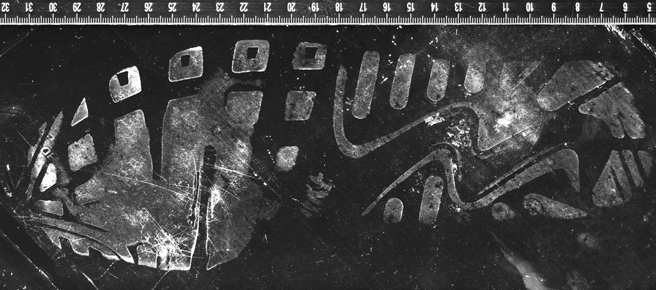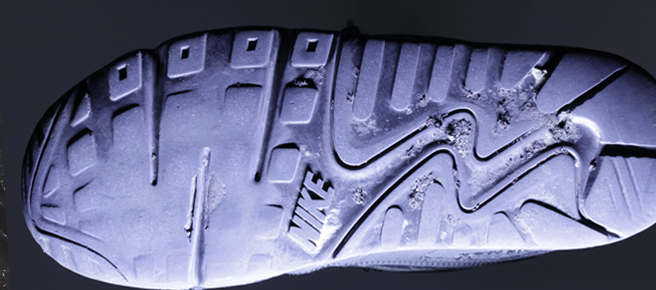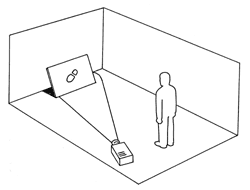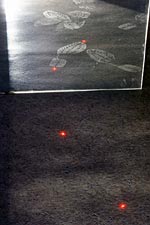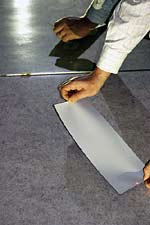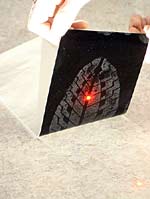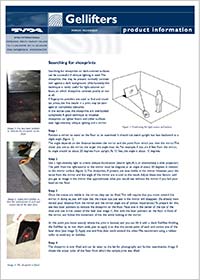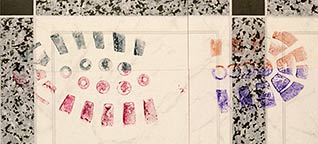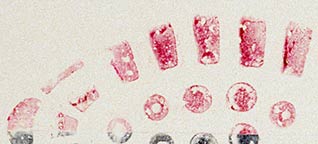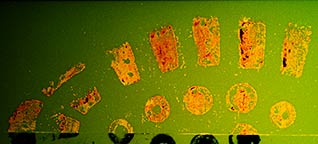Risk-free lifting - Gellifters make it possible to lift the same print multiple times without the risk of destroying it. Also, there is minimal or no risk of damaging the surface of the exhibit.
Easy to use - The flexibility of the Gellifter makes it easy to apply on any surface. The low-tack adhesive makes it easy to remove.
One product, many applications - Lift powdered fingerprints, untreated fingerprints, fingerprints developed with cyanoacrylate, fingerprints in/on latex and vinyl gloves, shoe impressions in dust, traces in blood, dye-stained finger- and shoeprints in blood, earprints, indented writing, micro traces and fibers.
Lift from virtually every surface - Porous or non-porous, flat or curved, smooth or rough: a black, white or transparent Gellifter will do the job.
No air bubbles - The thick gelatin layer of Gellifters eliminates the risk of trapping air bubbles when lifting prints from rough surfaces. This ensures a complete lift of the print, without gaps
Weak traces are clearly visualized - Even the weakest traces become clearly visible when lifted with a black Gellifter. Its jet-black color and the high-gloss finish of its gelatin layer provide the right background to visualize the weakest traces.
Sharpness and rich contrast - The
jet black color of the black Gellifters and the high-gloss finish
provide a perfect combination of absorption and reflection.
Used with the right illumination, it achieves a crisp image in which the print is perfectly constrasted with the background.
Quality from start to finish - High standards of quality are maintained both in the production and packaging of Gellifters. We check every single Gellifter, just before packaging, to make sure that only the best ends up with you at the crime scene.
Unlike other lifting media, BVDA Gellifters have been especially developed for the lifting of fingerprints, shoeprints, dust marks and micro traces. The thick, non-aggressive, low-tack gelatin layer allows traces to be lifted from almost every surface, including porous material such as paper and cardboard.
- Untreated fingerprints
- Fingerprints developed with:
Powders (all types, even black)
Cyanoacrylate
SPR
Powdersuspension used on the adhesive side of certain tapes
- Fingerprints in/on latex and vinyl gloves
- Old fingerprints (relifting or improving)
- Postmortem fingerprinting
- Shoeprints in dust
- Muddy shoeprints on paper
- Earprints
- Micro traces
- Indented writing










